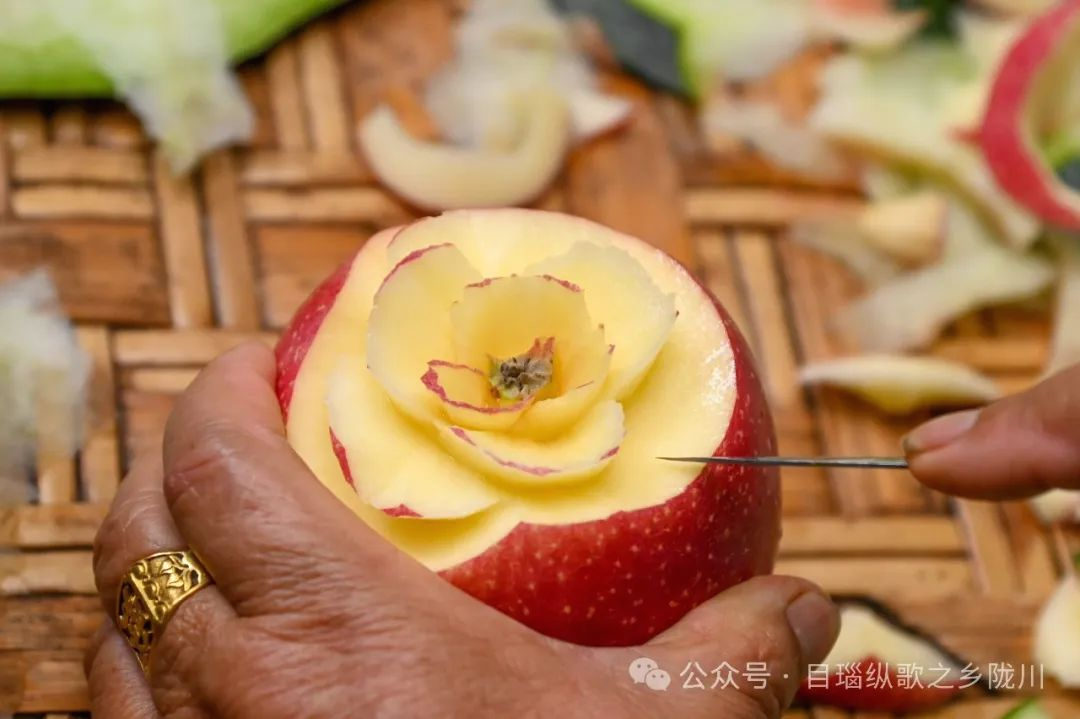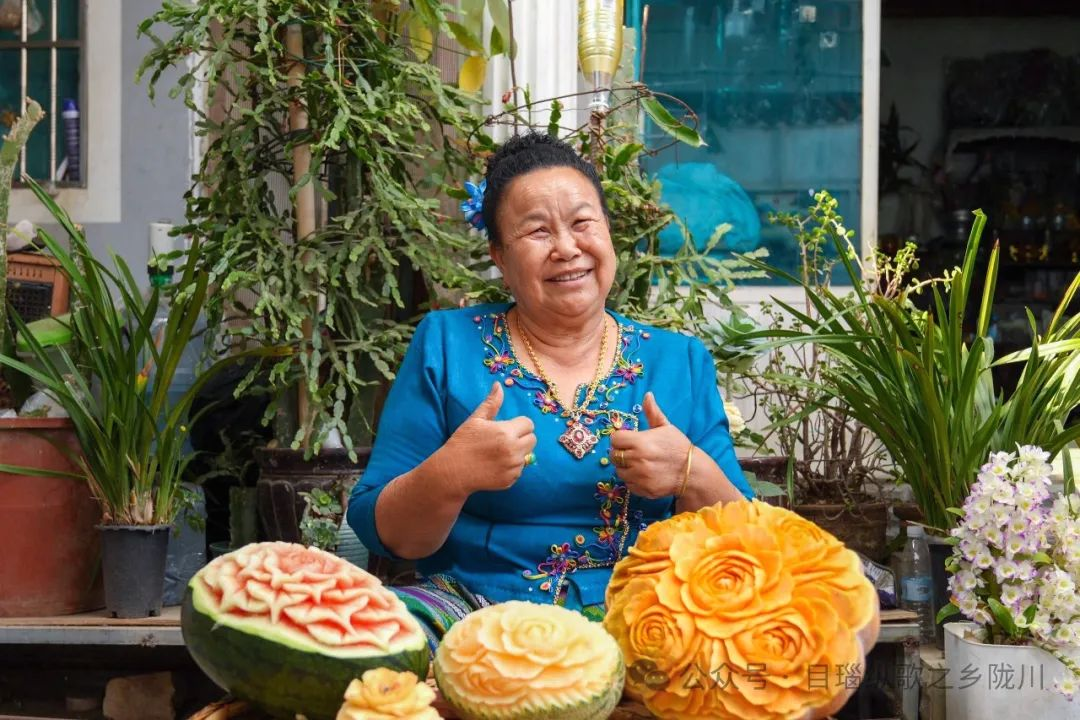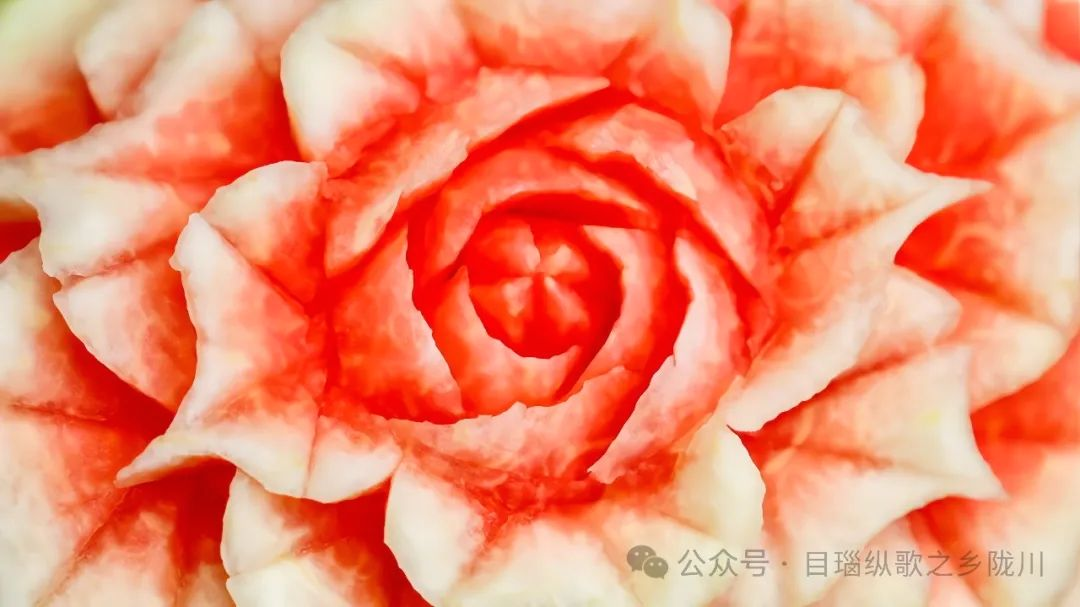Dai fruit carving: Artistry in every detail
In the afternoon, Xiaohuang, a Dai resident in Zhangfeng Village, Longchuan County, Dehong Dai and Jingpo Autonomous Prefecture, is found intently carving a watermelon in her home. With a delicate turn of her knife, a lifelike peony “blooms” on its surface. She is an inheritor of the Dai fruit carving technique, an intangible cultural heritage from Longchuan County, west Yunnan's Dehong Prefecture.

Dai fruit carving is a significant part of Dai traditional culture, with origins tracing back hundreds of years. At traditional festivals like the annual Water Splashing Festival, exquisite fruit carvings become eye-catching attractions. In 2017, Dai fruit carving was included in the fourth Yunnan Provincial Intangible Cultural Heritage List. Without blueprints or samples, the Dai people, relying solely on their imagination, skillful hands, and a small knife, can transform ordinary fruits and vegetables into exquisite handicrafts. Adorned with various auspicious patterns, these carved fruits express the Dai people’s longing for a beautiful life, showcasing their wisdom, artistic talent, and rich imagination.
Dai fruit carving predominantly features patterns of flowers, leaves, peacocks, and other birds. The intricate techniques involve various textures, including parallel diagonal lines, curved serrated patterns, circular designs, and concave-convex curves. This mastery has earned it the reputation of colorful, three-dimensional Dai paper-cutting. “Fruit carving isn’t just about making a few random cuts,” Xiaohuang explained with a smile. “Every cut must be steady, precise, and light; even a slight slip can mar the fruit’s integrity.”

Xiaohuang recounted falling in love with this craft the moment she first witnessed village elders transforming fruits into artworks during a festive event. “Every three to five days, I pick a few watermelons and pumpkins to practice,” she said. “Watching these fruits blossom into intricate flowers and art pieces through carving is truly magical.”
“Whether for major village and town events, like the Water Splashing Festival, or smaller banquets, my fruit carving is often requested. I also frequently participate in fruit carving competitions and consistently achieve high rankings,” Xiaohuang happily shared. She added that her fruit carvings, displayed at these festive occasions, have proven highly popular with tourists, significantly contributing to broader public awareness and appreciation of the art form. Xiaohuang is also regularly invited to teach fruit carving techniques, actively ensuring this intangible cultural heritage is both loved and preserved for future generations.

Text by Longchuan Integrated Media
Translated by TNTA
Proofreading by Zu Hongbing